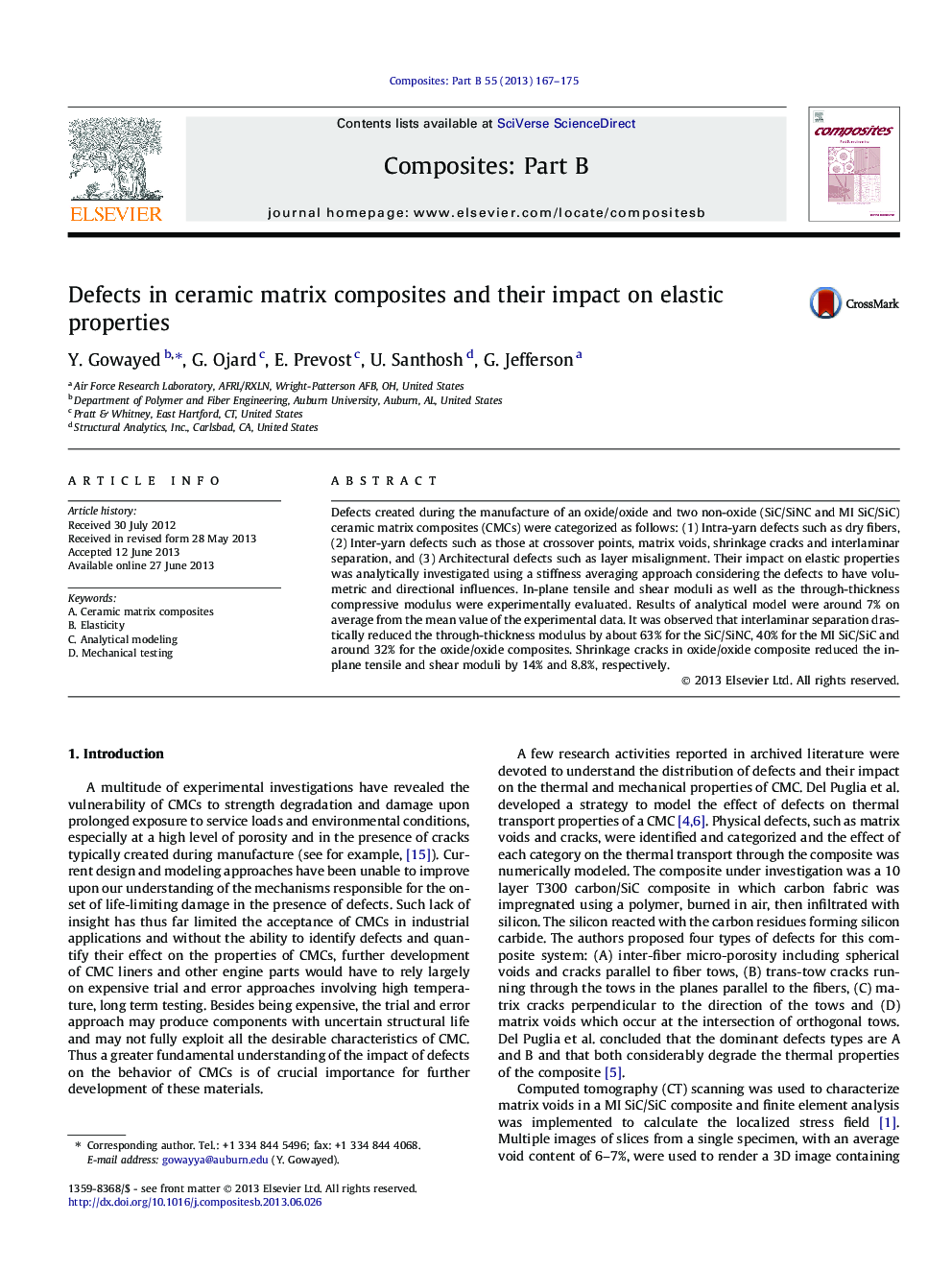| Article ID | Journal | Published Year | Pages | File Type |
|---|---|---|---|---|
| 818071 | Composites Part B: Engineering | 2013 | 9 Pages |
Defects created during the manufacture of an oxide/oxide and two non-oxide (SiC/SiNC and MI SiC/SiC) ceramic matrix composites (CMCs) were categorized as follows: (1) Intra-yarn defects such as dry fibers, (2) Inter-yarn defects such as those at crossover points, matrix voids, shrinkage cracks and interlaminar separation, and (3) Architectural defects such as layer misalignment. Their impact on elastic properties was analytically investigated using a stiffness averaging approach considering the defects to have volumetric and directional influences. In-plane tensile and shear moduli as well as the through-thickness compressive modulus were experimentally evaluated. Results of analytical model were around 7% on average from the mean value of the experimental data. It was observed that interlaminar separation drastically reduced the through-thickness modulus by about 63% for the SiC/SiNC, 40% for the MI SiC/SiC and around 32% for the oxide/oxide composites. Shrinkage cracks in oxide/oxide composite reduced the in-plane tensile and shear moduli by 14% and 8.8%, respectively.
